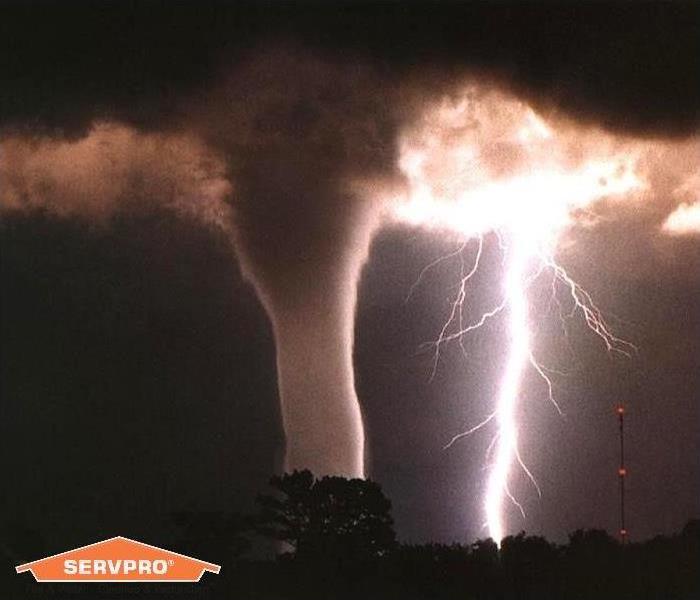Thunderstorm & Tornado Safety
7/20/2020 (Permalink)
Why worry about thunderstorms?
- Lightning
- Tornadoes
- Straight-line winds
- Flash floods and floods
- Hail
A thunderstorm affects a relatively small area when compared to a hurricane or a winter storm. The typical thunderstorm is 15 miles in diameter and lasts an average of 30 minutes. Despite their small size, ALL thunderstorms are dangerous! Of the estimated 100,000 thunderstorms that occur each year in the United States, about 10 percent are classified as severe.
Who's Most At-Risk from Thunderstorms?
From tornadoes, people who are in mobile homes our outdoors.
From lightning, people who are outdoors or anyone who stays outdoors when thunderstorms are nearby.
From flash flooding, people who walk or drive through flood waters.
From large hail, people who are caught outdoors.
Be Prepared
Each year, many people are killed or seriously injured by tornadoes and severe thunderstorms despite advance warning. Some did not hear the warning; others heard the warning but did not believe it would happen to them. The following preparedness information, combined with timely severe weather watches and warnings, may save your life. If you hear a warning or observe threatening skies, only YOU can make the decision to seek safety. This could be the most important decision you will ever make.
Develop a plan for you and your family at home, work, school and when outdoors. The American Red Cross offers tips at redcross.org, and the Federal Emergency Management Agency (FEMA) at ready.gov.
When Dangerous Weather Approaches
Avoid the Lightning Threat
- Have a lightning safety plan. Know where you'll go for safety and how much time it will take to get there. Make sure your plan allows enough time to reach safety.
- Postpone activities. Before going outdoors, check the forecast for thunderstorms. Consider postponing activities to avoid being caught in a dangerous situation.
- Monitor the weather. Look for signs of a developing thunderstorm such as darkening skies, flashes of lightning or increasing wind.
- Get to a safe place. If you hear thunder, even a distant rumble, immediately move to a safe place. When thunder roars, go indoors! Fully enclosed buildings with wiring and plumbing provide the best protection. Sheds, picnic shelters, tents or covered porches do not protect you from lightning. If a sturdy building is not nearby, get into a hard-topped metal vehicle and close all the windows. Stay inside until 30 minutes after the last rumble of thunder.
- If you hear thunder, don't use a corded phone. Cordless phones, cell phones and other wireless handheld devices are safe to use.
- Keep away from electrical equipment, wiring and water pipes. Sensitive electronics should be unplugged well in advance of thunderstorms. Don't take a bath, shower or use other plumbing during a thunderstorm.
When Caught Outside During Thunder
There is no safe place outside during a thunderstorm. Plan ahead to avoid this dangerous situation! If you're outside and hear thunder, the only way to significantly reduce your risk of becoming a lightning casualty is to get inside a substantial building or hard-topped metal vehicle as fast as you can. Remember, there is no substitute for getting to a safe place.
- Avoid open areas and stay away from isolated tall trees, towers or utility poles. Do not be the tallest object in the area. Lightning tends to strike the tallest objects in the area.
- Stay away from metal conductors such as wires or fences. Metal does not attract lightning, but lightning can travel long distances through it.





 24/7 Emergency Service
24/7 Emergency Service
